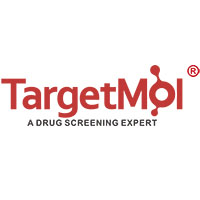| Name | Tanshinone I |
| Description | Tanshinone I (Tanshinone A), an active principle isolated from the herbal medicine Salvia miltiorrhiza, displays cytotoxicity against tumor cells. |
| Cell Research | RAW 264.7 cells are cultured with DMEM supplemented with 10% FBS and 1% antibiotics under 5% CO2 at 37°C. Briefly, cells are plated in 96-well plates (2×105 cells/well). LPS (1 ug/mL) and Tanshinone I are simultaneously added and incubated for 24 h, unless otherwise specified. The PGE2 concentration in the medium is measured using an EIA kit for PGE2. In order to determine the effects of Tanshinone I on PGE2 production after induction of COX-2, cells are incubated with LPS (1 ug/mL) for 24 h and thoroughly washed. Then, Tanshinone I is added without LPS and the cells are incubated for another 24 h. From the medium, PGE2 concentrations are measured. The cytotoxicity of Tanshinone I to RAW cells is checked using the MTT assay. Tanshinone I does not show any cytotoxicity up to 100 uM[1]. |
| Kinase Assay | As sources of PLA2, human recombinant sPLA2 (type IIA) is purified from CHO cells transfected with the PLA2 gene and rabbit recombinant platelet cPLA2 is obtained through its expression in baculovirus. The standard reaction mixture (200 μL) contained 100 mM Tris-HCl buffer (pH 9.0) with 6 mM CaCl2 and 20 nmol 1-acyl-[1-14C]-arachidonyl-sn-glycerophosphoethanolamine (2000 cpm/nmol) in the presence or absence of Tanshinone I. The reaction is started by adding 50 ng purified sPLA2 or cPLA2. After 20 min at 37°C, the free fatty acid generated is analysed. Under these standard conditions, the reaction mixture in the absence of Tanshinone I released approximately 10% of free fatty acid from the phospholipid substrate added[1]. |
| In vivo | Tanshinone I demonstrates significant anti-inflammatory effects in rat models of both acute and chronic inflammation, specifically in carrageenan (CGN)-induced paw oedema and adjuvant-induced arthritis (AIA). Employing these classical animal models, Tanshinone I, upon oral administration, significantly mitigates CGN-induced paw oedema with a 47% inhibition at a dosage of 160 mg/kg, in contrast to indomethacin's IC50 of 7.1 mg/kg. Additionally, in the AIA model, it achieves a 27% reduction in secondary inflammation on the 18th day at a daily oral dose of 50 mg/kg, while prednisolone displays a potent 65% inhibition at 5 mg/kg/day. |
| Storage | Powder: -20°C for 3 years | In solvent: -80°C for 1 year | Shipping with blue ice/Shipping at ambient temperature. |
| Solubility Information | H2O : < 1 mg/mL (insoluble or slightly soluble)
Ethanol : < 1 mg/mL (insoluble or slightly soluble)
DMSO : 2.5 mg/mL (9.05 mM), Sonication is recommended.
|
| Keywords | Tanshinone I | PLA2 | Phospholipase | Inhibitor | inhibit |
| Inhibitors Related | Neomycin sulfate | 1-Naphthaleneacetic acid potassium salt | trans-Benzylideneacetone | Benzylideneacetone | Omeprazole | Tris(2,4-di-tert-butylphenyl)phosphate | (E/Z)-Polydatin | Indomethacin | Fluticasone (propionate) | 1-Naphthaleneacetic acid | Darapladib | Lansoprazole |
| Related Compound Libraries | Terpene Natural Product Library | Traditional Chinese Medicine Monomer Library | Bioactive Compound Library | Selected Plant-Sourced Compound Library | Drug Repurposing Compound Library | Miao medicine Compound Library | Natural Product Library | Inhibitor Library | Natural Product Library for HTS | Anti-Cancer Approved Drug Library | Immunology/Inflammation Compound Library | Anti-Cancer Active Compound Library |

 United States
United States






